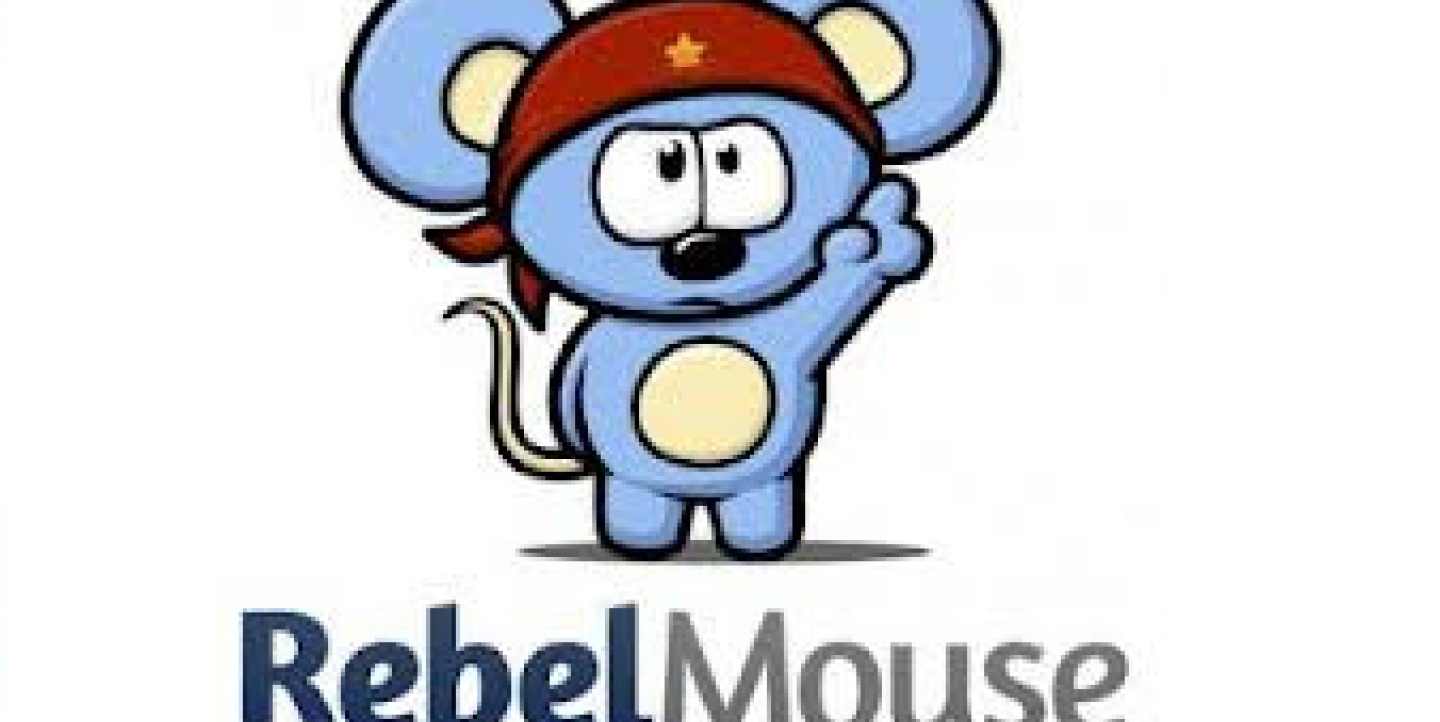Community managers charged with making sense of each new tweet, post, GIF or video spewed from the Internet firehose have their work cut out for them.
Newsrooms like PBS, The Guardian, ESPN, The Wall Street Journal have been taking advantage of a social media aggregator that funnels all of that content into one place - RebelMouse.
RebelMouse can pull in streams from Twitter, Facebook, Instagram, YouTube, Google Plus, LinkedIn, Tumblr, RSS feeds and more, and display them automatically on your RebelMouse page.
You can filter what shows up on your RebelMouse site by handle, hashtag, domain, tags, likes, a favorites list and other factors, or bring in new content anywhere from the Web directly from your browser with the Post bookmarklet.
In addition to creating a personal page on the RebelMouse site, you can also add a "social layer" to your own site by embedding the stream you’ve created directly to your content management system. “It's just one line of Javascript code that’s pulling everything that you’re curating on RebelMouse directly to your site,” said Niketa Patel, director of content at RebelMouse during a recent Poynter webinar.
For example, check out this embed of IJNet's curation of daily journalism opportunities and blog posts on RebelMouse:
Launched last year by former Huffington Post chief technology officer Paul Berry, the tool gives new ways for journalists to accent breaking news with user-generated content, to live blog events, to broadcast staffers' own voices and to brand themselves. Here are some examples of how newsrooms are using the platform:
- Accenting live events and anniversaries with user-generated content
NBC News used RebelMouse for its coverage of the 50th anniversary of the March on Washington, where Martin Luther King Jr. delivered his historic “I Have a Dream” speech. NBC curated content from Instagram, Facebook and Twitter from celebrities, politicians and readers expressing how MLK made an impact in their lives. The NBC newsroom put up YouTube clips with footage on the ground that also fed into NBC's RebelMouse page. NBC then embedded this page on the homepage of its site.
PBS NewsHour asked its viewers to call in and share their memories of the civil rights movement for a feature piece on the Voting Rights Act of 1965. NewsHour featured the audio testimonials on a Tumblr and on Soundcloud, and used RebelMouse to gather each piece of content. NewsHour embedded the collection on its site to create this package.
During South by Southwest, Fast Company asked its readers to send in Vines depicting what innovation means to them. Fast Company set its RebelMouse page to aggregate all the Vines submitted with hashtag #IUNY13 to one page, and then embedded that page onto its site.
- Live-blogging breaking news
Al Jazeera America used RebelMouse to live blog the latest developments in Syria, pulling in posts from YouTube, its own site and Twitter to provide live updates as events unfolded on the ground.
- Building community engagement
Local news site SFGate asked San Francisco residents to post Instagram images of the city from a local’s point of view, and set the filter to automatically curate only images with hashtag #howSFseesSF. Each filtered image was added to SFGate's RebelMouse page as a draft, enabling the editor to moderate and highlight the pictures worth showcasing. (You can also set content to appear without moderation if you prefer.)
- Curating local news
SFGate curates what Patel likens to a "water cooler for San Francisco," a Twitter list of journalists, public officials and local businesses that the news organization updates daily.
TimeOut New York uses RebelMouse to curate an Editors' Picks section that's embedded as a permanent sidebar on its site. TimeOut created a Twitter list of its editors, and any tweets that included a certain domain name showed up on the RebelMouse stream. Filtering by an institutional domain name can ensure tthat none of the editors’ personal tweets get added to the mix.
- Showcasing the voices of newsroom staffers
The Guardian used RebelMouse for its Emmy coverage, with staffers snapping red carpet photos and tweeting their personal reactions to the night's events. They pulled content from a variety of sources and highlighted voices of awards ceremony attendees.
The Wall Street Journal first used the platform for its Fashion Week coverage. WSJ created a Twitter list of staff on the ground, bloggers, photographers and contributors. It pulled in tweets from the list with branded hashtags created for the event.
- Building a personal portfolio
NBC News correspondent Ann Curry uses RebelMouse to create what Patel calls the "Ann Curry Experience," a curation of Curry's social media activity, including tweets, Instagram pictures, stories she covers for her network, slideshows from Google Plus, YouTube videos and more.
IJNet Editorial Assistant Margaret Looney writes about the latest media trends, reporting tools and journalism resources.
Image CC-licensed on Flickr via stevegarfield.

